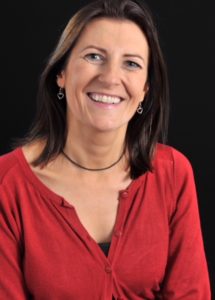Catriona Jones, University of Hull (@Free_wheeler68)

This week’s EBN Twitter Chat is on Wednesday 7thNovember (8-9 pm UK time) and will explore issues around asexuality and how healthcare practitioners can provide culturally competent care to people who identify as asexual.
Asexuality is generally defined as a lifelong lack of, or an absence of, sexual attraction. Research indicates that identifying as asexual is a process which starts with an experience of being ‘different’ from a peer group (Carrigan 2012). This is typically, but not exclusively during adolescence.
If we take sexuality to mean all aspects of social life and subjective experience that have erotic significance, adolescents who later go on to self-identify as asexual, when confronted with sexuality, often feel unable to engage with it to the same extent – and in the same way – as their peer group. When their friends talk about ‘fancying’ other people, they can’t relate to it, when they start ‘dating’ and are confronted with the prospect of sexual intimacy, they are not interested in it, and when their friends appear highly motivated to find themselves a sexual partner, they don’t share that level of motivation. These experiences range from being indifferent to sexuality, to being repulsed. Lack of sexual behaviour or activity has also been used to define asexuality (Rothblum & Brehony 1993); however contemporary definitions should not depend upon the presence or absence of sexual activity, given that that some asexuals do engage in sexual intercourse (Brotto et al, 2010)
There are a number of sub-identities within the overall identity which help to illustrate the more nuanced models of attraction and relationship formation that exist in the asexual community. The sub – identities; grey asexual, aromantic asexual, pan romantic asexual, (there are many more), help further categorise the asexual experience, and reflect the fact that some asexuals fall in love, some don’t; some feel romantic attraction, others don’t; some engage in sexual activity under certain circumstances, for example, once a deep emotional bond and connection has been established, and some don’t.
Before realising that they might be asexual, many self-identified asexuals don’t have enough information to hand to enable them to apply a label to how they are feeling. However, at some point they discover, either through internet searching, or though talking to other people, that they may be asexual. For many, this can be empowering, enabling them to apply a name to their experience, and providing access to others who identify in the same way.
Research suggests that how sexual minority groups are accepted and treated in healthcare will largely be determined by how informed and educated practitioners are about these patient groups (Albarran and Salmon 2000). Today’s mainstream view on sex is that it is positive, healthy and desirable, and individuals who are not interested in sexuality may be viewed as having a disorder (Yule et al, 2014). On occasion, when asexuals disclose their asexual identity in healthcare (particularly mental health) settings, they encounter insistent attempts to ‘correct’ their sexual orientation; linking it to a previous trauma. Evidence suggests that asexuals are at risk of others invalidating their orientation and refusing to believe it exists (Robbins et al, 2016). Having some understanding of what it means to identify as asexual and respecting the choices made by asexuals can improve the experiences of those who embrace this identity when engaging with healthcare. Whilst asexuality is not new to human sexuality, it is relatively new to public discourse (Smith, 2012); healthcare practitioners therefore may not be familiar with the term, or with what the identity represents.
Jones et al (2017) in a systematic review and qualitative analysis of interview data from self-identified asexuals, proposed three significant features of asexuality; romantic differences coupled with sexual indifference, validation of identity through engagement with asexual communities, and a diversity of sub-identities. This work was undertaken to provide health professionals and practitioners working in clinical settings with some insights of the features of an asexual identity to facilitate culturally competent care.
The questions that will be explored during the Twitter chat will include;
- What challenges are faced by people who identify as asexual, particularly when accessing healthcare services?
- How can healthcare professionals better support and provide culturally competent care to people who identify as asexual?
- How do we enhance healthcare practitioners’ (and the wider population’s) understanding of asexuality?
- What are the research priorities in relation to asexuality?
Participating in the Twitter chat requires a Twitter account; if you do not already have one you can create an account at www.twitter.com. Once you have an account, contributing is straightforward: you can follow the discussion via @EBNursingBMJ and #ebnjc, and contribute by tweeting with the hashtag #ebnjc.
References
Albarran JW & Salmon D (2000) Lesbian, gay and bisexual experiences within critical care nursing 1988-1998: a survey of the literature. International Journal of Nursing Studies 37(5), 445 – 55.
Brotto LA, Knudson G, Inskip J, Rhodes K & Erskine Y (2010) Asexuality: a mixed methods approach. Archives of Sexual Behaviour, 39, 599 – 616.
Carrigan M (2011)There’s more to life than sex? Difference and commonality within the asexual community. Sexualities, 14,462 – 478.
Jones C, Hayter M, Jomeen J (2017) Understanding asexuality as a means to facilitate culturally competent care. Journal of Clinical Nursing. 26, pp 3811 – 3831.
Robbins NK, Low KG & Query AN (2016) A qualitative exploration of the coming out process for asexual individuals. Archives of Sexual Behaviour,45 (3), 751 – 760.
Smith SE (2012) Asexuality always existed: you just didn’t notice it. Available at https://www.theguardian.com/commentisfree/2012/aug/21/asexuality-always-existed-asexual[Accessed 12th July 2015].
Yule MA, Brotto LA, Gorzalka B (2014) Sexual fantasy and masturbation among asexual individuals. The Canadian Journal of Human Sexuality,23 (2), 89 – 95.